Abstract
Recruiting and retaining subjects for longitudinal prevention trials is challenging. The inherent difficulties are compounded when the trial is to take place in a low-income minority community, since prevention is a low priority among residents of such communities, and research is viewed with suspicion. We present our experiences in attempting to recruit and retain low-income black women living in inner-city Atlanta for a trial of an educational intervention to promote screening for cancer. The intervention was conducted in the home by trained lay health workers. We found that recruitment was more successful when we recruited directly from the community than when we recruited from the patient registry of a primary health care center. The attrition rate over an 18-month period was high. Among members of the intervention group, those retained in the study tended to be wealthier and better educated and were more likely to be married and employed than those who dropped out. It seems probable that women of lower socioeconomic status found our intervention to be intrusive or burdensome. Among the controls, socioeconomic factors did not discriminate between those who completed the study and those who did not; loss to follow-up in this group was associated only with younger age. In conducting research of this type in low-income minority communities, special attention must be given to issues of recruitment and retention if the validity of the study is to be preserved.
Full text
PDF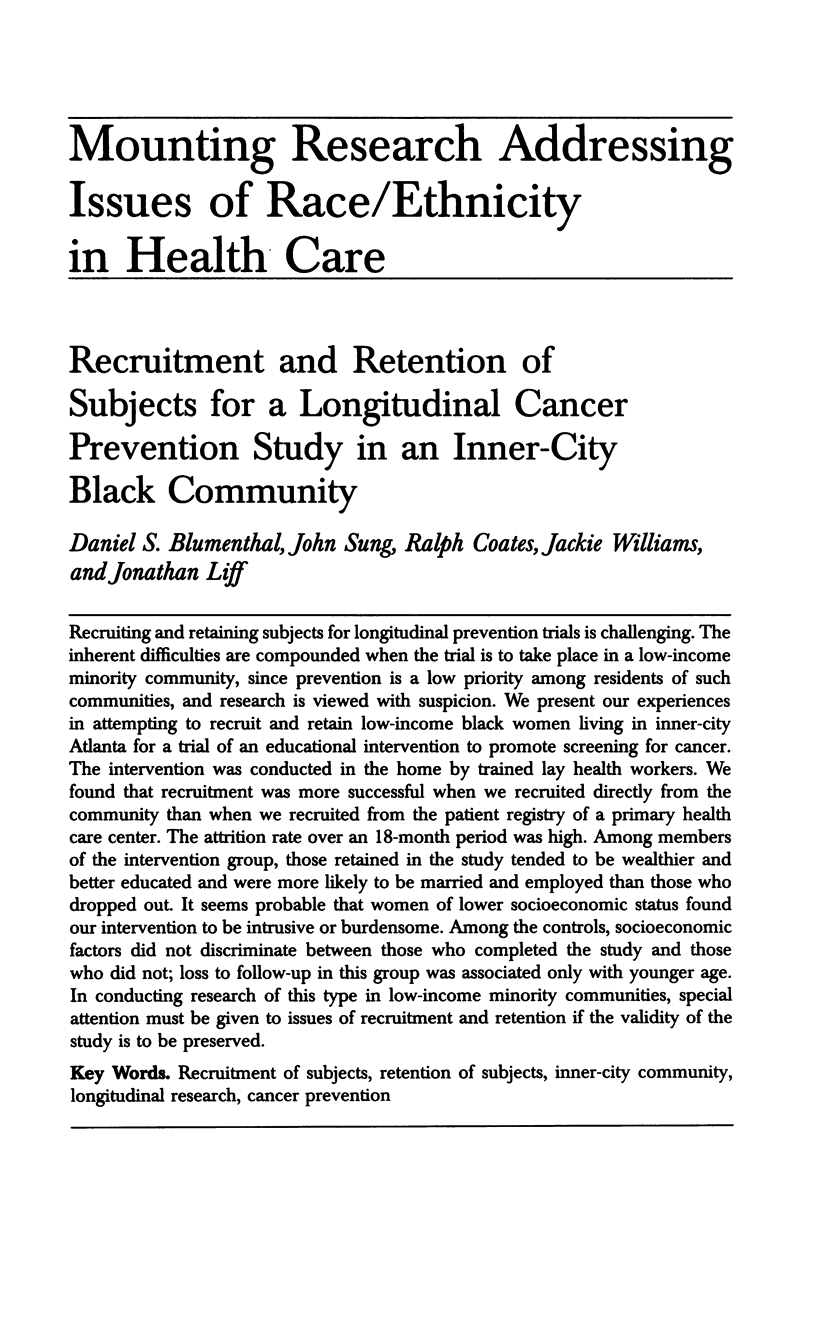
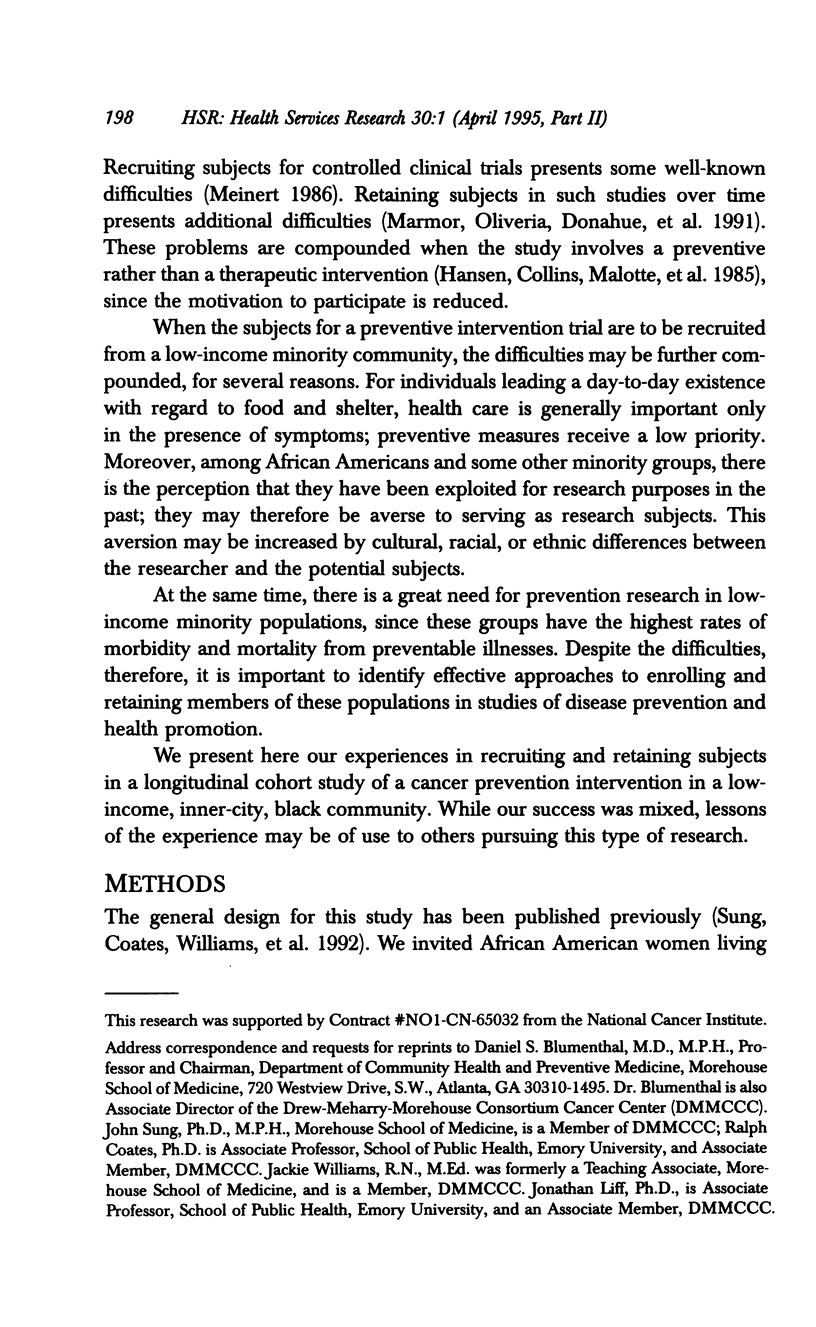
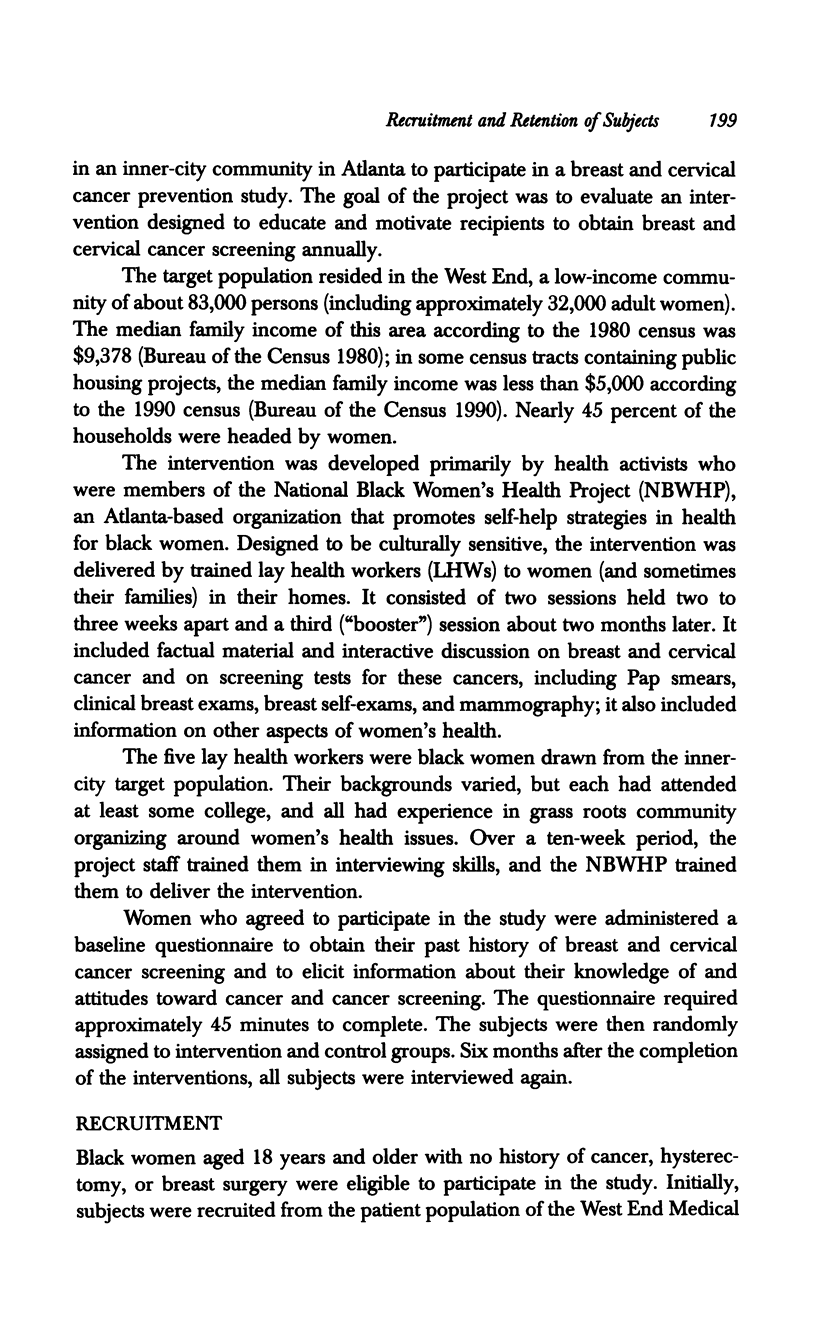
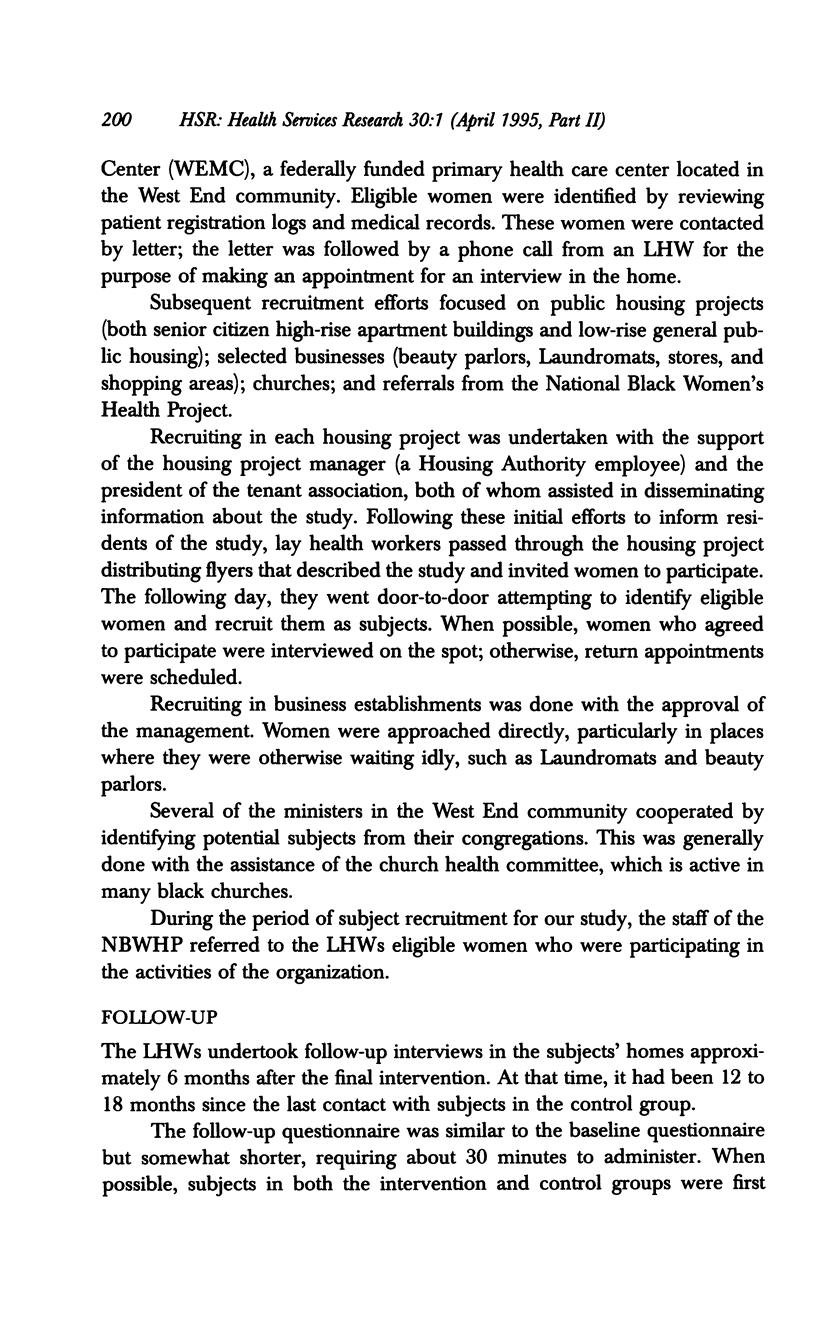

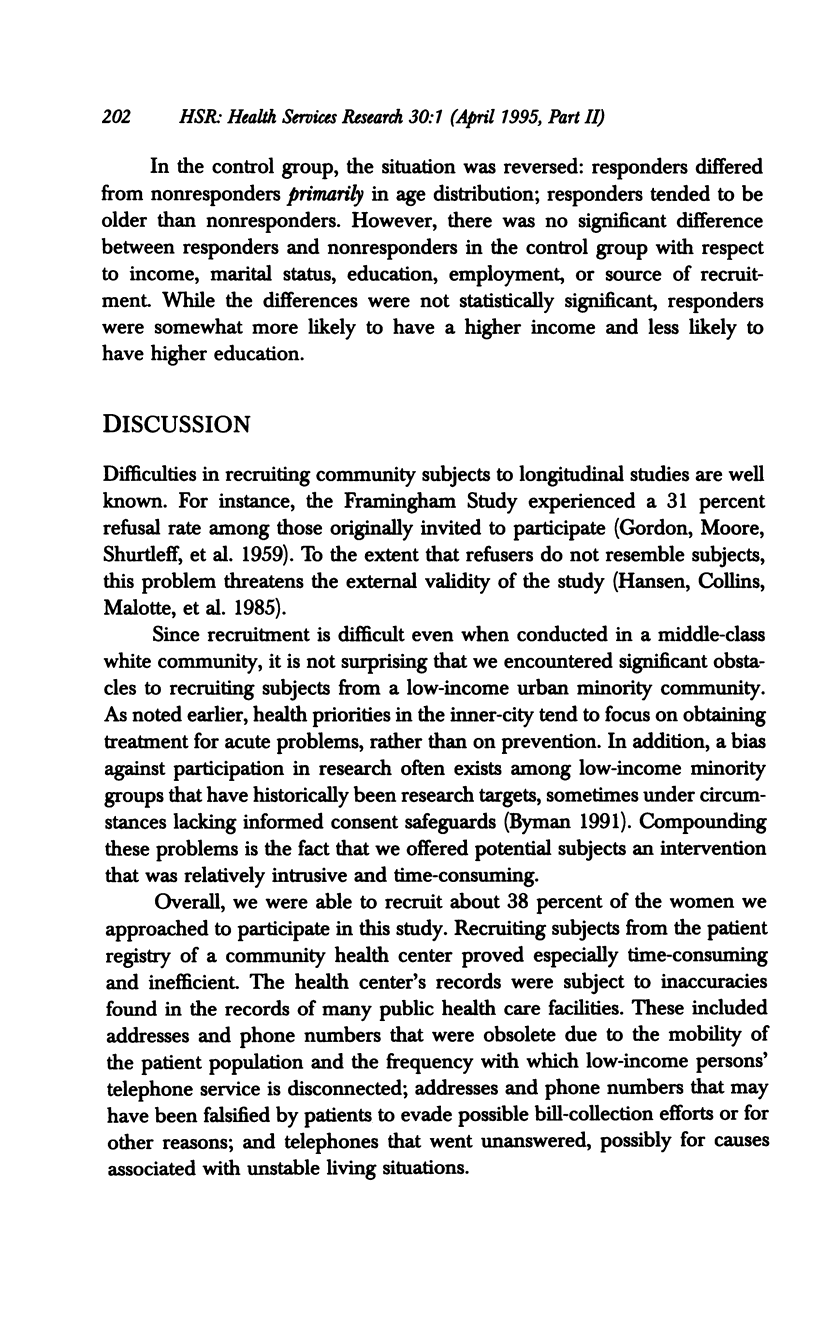
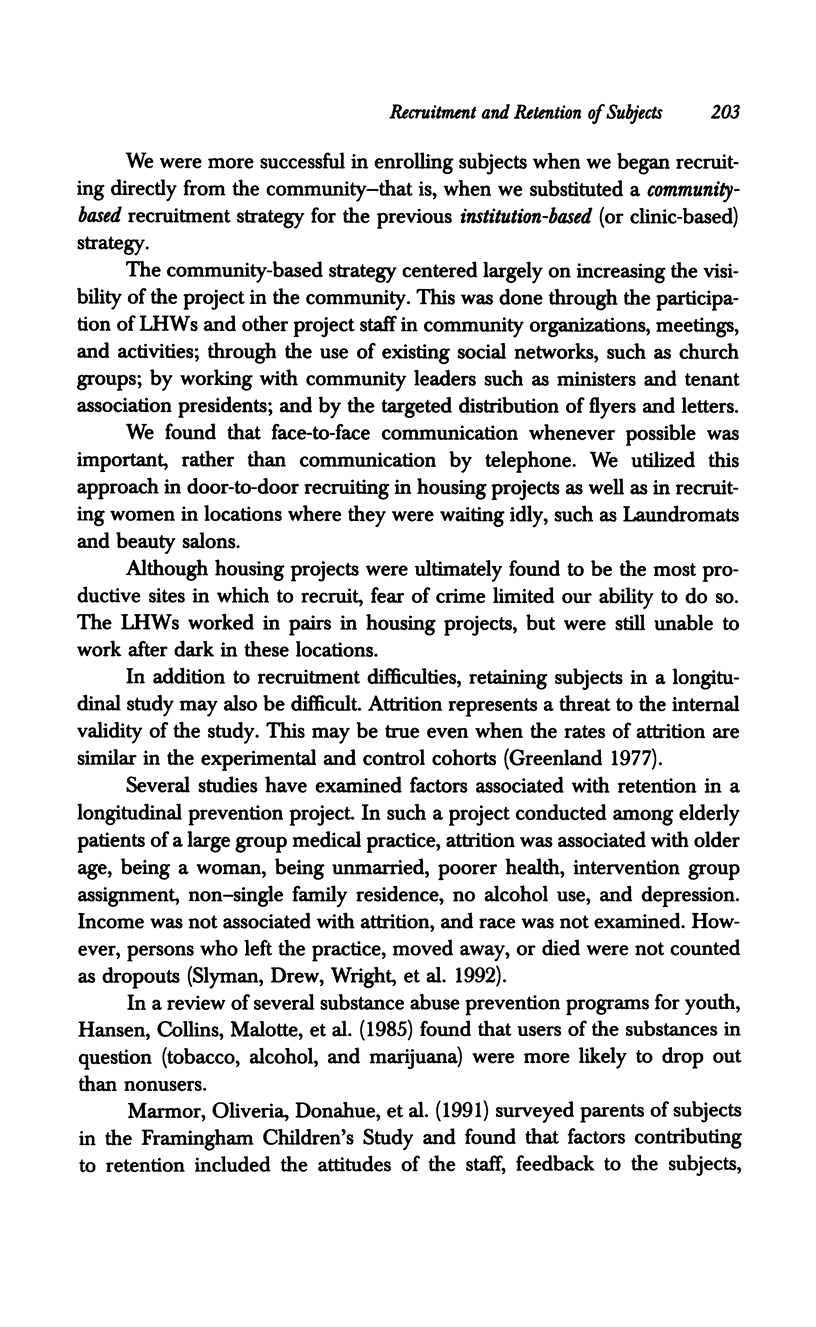
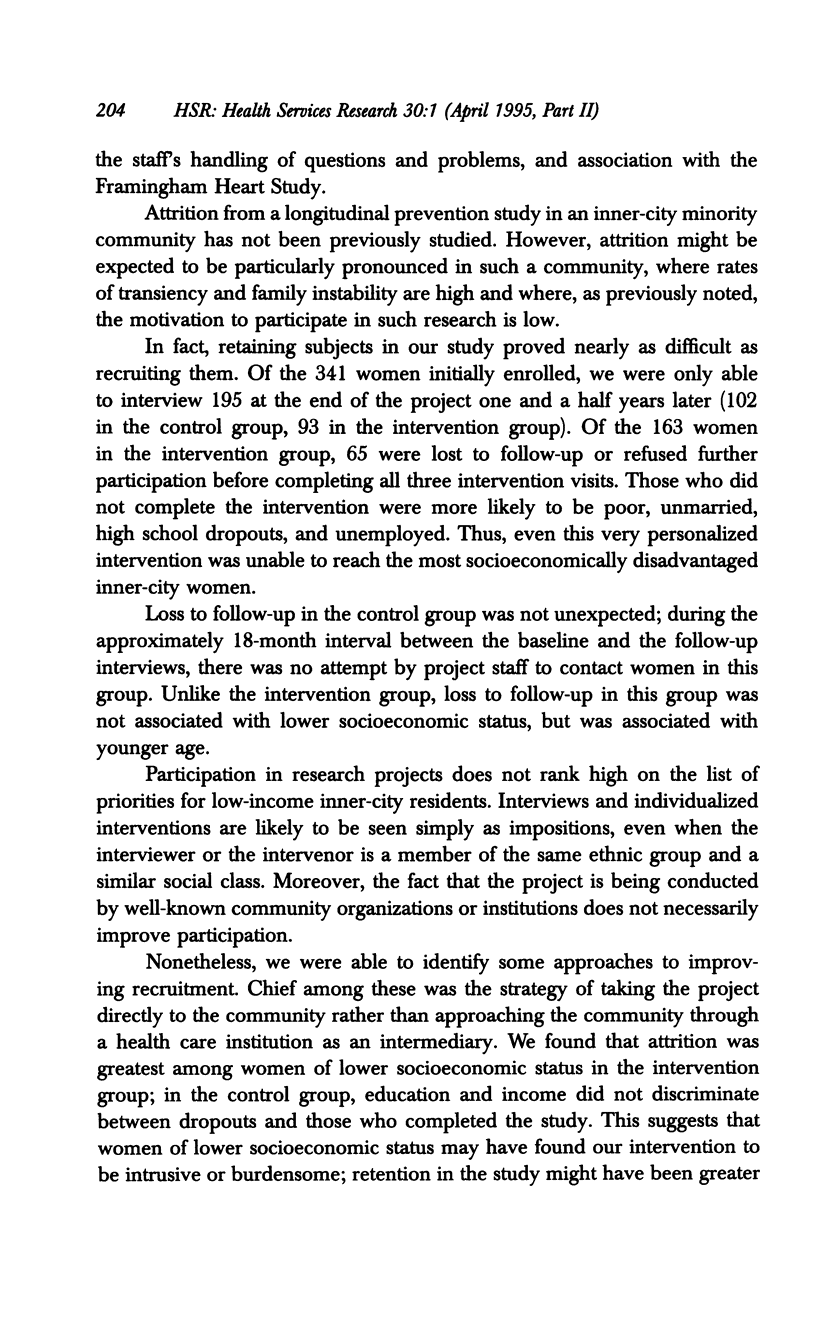
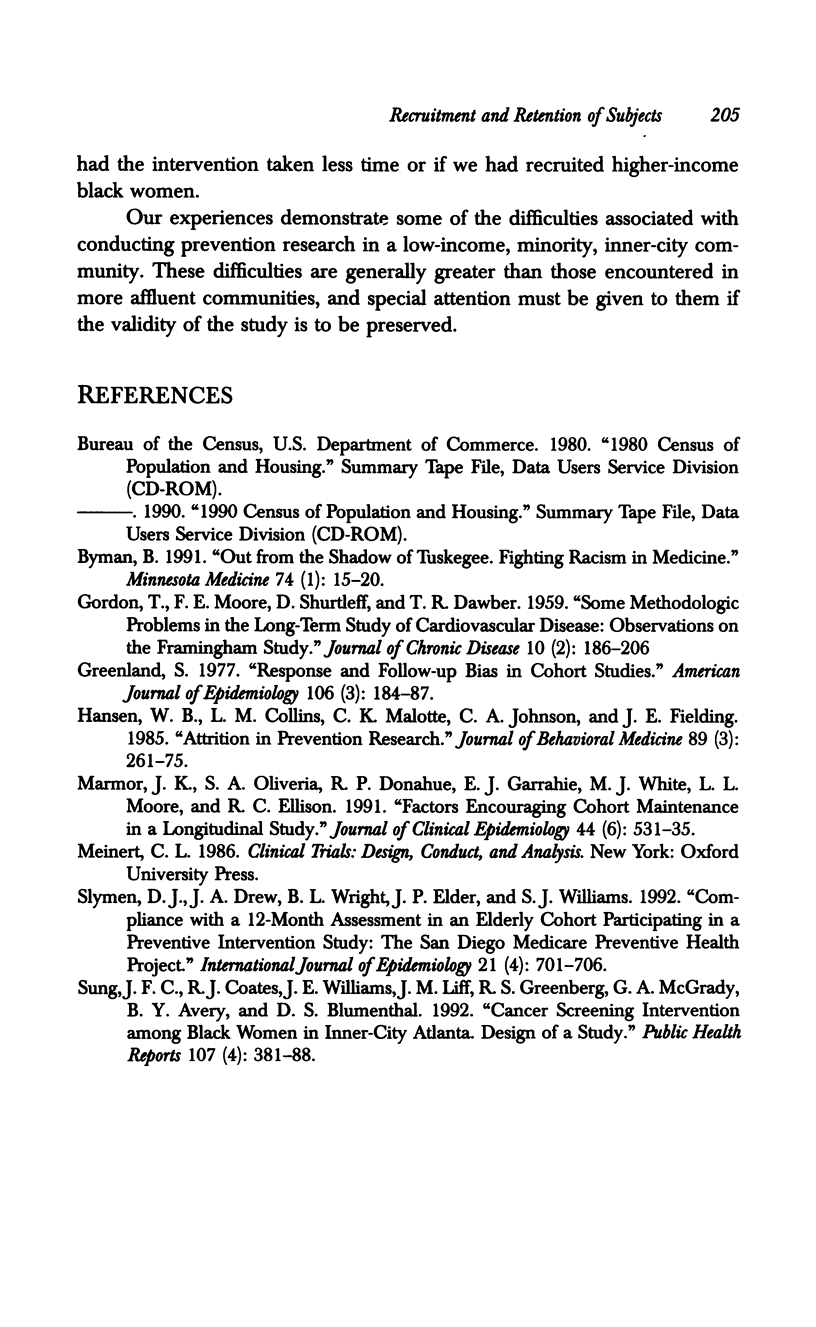
Selected References
These references are in PubMed. This may not be the complete list of references from this article.
- Byman B. Out from the shadow of Tuskegee. Fighting racism in medicine. Minn Med. 1991 Aug;74(8):15–20. [PubMed] [Google Scholar]
- Greenland S. Response and follow-up bias in cohort studies. Am J Epidemiol. 1977 Sep;106(3):184–187. doi: 10.1093/oxfordjournals.aje.a112451. [DOI] [PubMed] [Google Scholar]
- Hansen W. B., Collins L. M., Malotte C. K., Johnson C. A., Fielding J. E. Attrition in prevention research. J Behav Med. 1985 Sep;8(3):261–275. doi: 10.1007/BF00870313. [DOI] [PubMed] [Google Scholar]
- Marmor J. K., Oliveria S. A., Donahue R. P., Garrahie E. J., White M. J., Moore L. L., Ellison R. C. Factors encouraging cohort maintenance in a longitudinal study. J Clin Epidemiol. 1991;44(6):531–535. doi: 10.1016/0895-4356(91)90216-v. [DOI] [PubMed] [Google Scholar]
- Slymen D. J., Drew J. A., Wright B. L., Elder J. P., Williams S. J. Compliance with a 12-month assessment in an elderly cohort participating in a preventive intervention study: the San Diego Medicare Preventive Health Project. Int J Epidemiol. 1992 Aug;21(4):701–706. doi: 10.1093/ije/21.4.701. [DOI] [PubMed] [Google Scholar]
- Sung J. F., Coates R. J., Williams J. E., Liff J. M., Greenberg R. S., McGrady G. A., Avery B. Y., Blumenthal D. S. Cancer screening intervention among black women in inner-city Atlanta--design of a study. Public Health Rep. 1992 Jul-Aug;107(4):381–388. [PMC free article] [PubMed] [Google Scholar]


